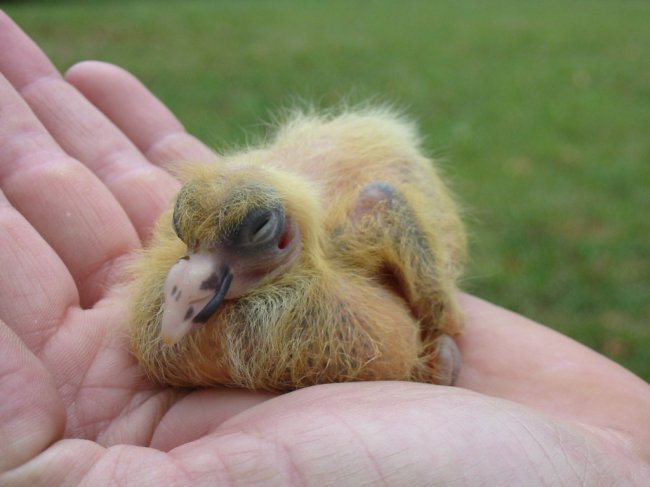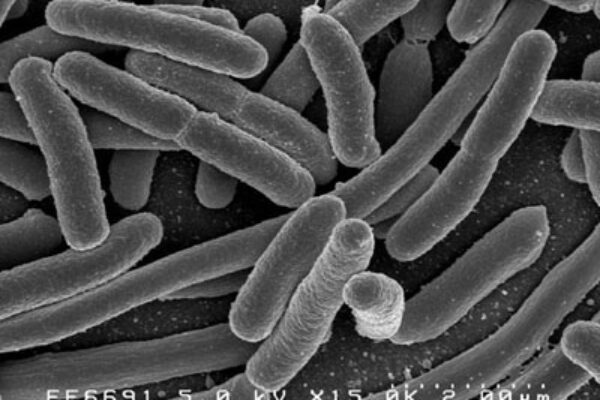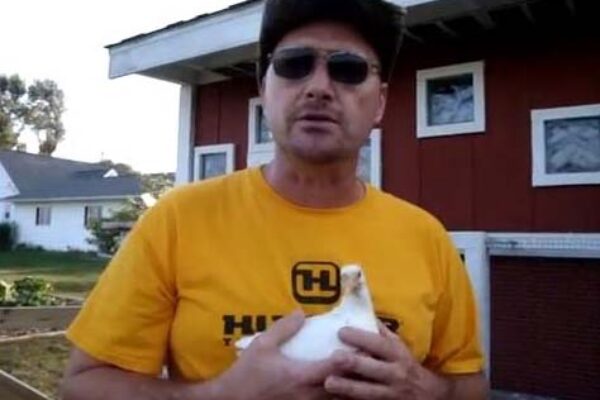Care of the Abandoned Racing Pigeon Egg or Hatchling—Part 1
 Being faced with an abandoned racing pigeon egg or hatchling can present some challenges for you, the pigeon fancier. If the abandoned young is from one of your more valuable pairs, your desire to save it is undoubtedly strong. In this article, we will discuss the options you have for successfully saving an abandoned egg or hatchling.
Being faced with an abandoned racing pigeon egg or hatchling can present some challenges for you, the pigeon fancier. If the abandoned young is from one of your more valuable pairs, your desire to save it is undoubtedly strong. In this article, we will discuss the options you have for successfully saving an abandoned egg or hatchling.
Rescuing an Abandoned Racing Pigeon Egg
Success in rescuing an abandoned egg really depends on how long the egg was without care. If the egg has not been incubated, then development has not started. The egg does not need to be kept warm to remain viable. If this is the case, the egg can be stored for several days while you wait for a potential foster pair of parents to lay their eggs. If you do have a potential foster pair that has laid eggs, be sure the time interval between the abandoned egg and the foster pair’s eggs is about 24 hours, and no more than 48 hours.
If you need to wait, store the un-incubated egg in a cool, dry place with the pointed end up at about a 45 degree angle. Turn the egg at least twice daily, alternating between left and right. Once the fostering pair lays their eggs, you can slip the stored egg under them and the egg will begin to develop concurrently with its foster eggs.
Fostering the Pigeon Egg or Hatchling
Ideally, the best way to save and raise the egg or hatchling is by fostering it under an accepting pair of parenting racers. Again, for the best chance of success, there should be no more than 48 hours, preferably about 24 hours, difference in the development cycle between the foster pair’s youngsters and the abandoned hatchling.
Unfortunately, a suitable foster pair is not always available. But this does not automatically mean that the hatchling will be lost. Because of the accessibility of fairly inexpensive incubators, along with scientifically formulated and age-appropriate feed, you can easily choose to artificially incubate the abandoned egg and hand-raise the orphan hatchling.
Artificial Incubation
In the absence of a suitable pair of fostering birds, artificial incubation of the orphan pigeon egg becomes necessary. Fortunately, there are a number of ‘hobby’ incubators you can choose from. Here are a few brands to get you started:
- Brinsea
- Novital
- Multiquip
- Masalles
Prices really vary by the extra features you can get with the incubator. The prices range from less than $100 to over $500. You will be paying more for incubators with more automation but the convenience may be worth it for you. Basic incubator features include temperature and humidity maintenance but you can also get incubators that will automatically turn the egg up to 25 times per day.
Environmental Parameters for Artificial Incubation
Most bird species require a similar range of temperature and humidity. For the incubation period of pigeon eggs, the following levels are recommended:
- Temperature between 37.2 and 37.5 degrees C (or 99 to 99.5 degrees F)
- Humidity levels of 55 to 60%
The Incubation Process
The process of pigeon egg incubation basically includes maintaining the required temperature and humidity and regularly turning the egg. You continue this routine until two or three days before hatching. At that time, you can stop turning the egg and you’ll need to increase the humidity to 70 to 75%.
Once the egg has successfully hatched, if there is still no suitable foster pair, then you will need to continue to provide the hatchling with warmth, again, at 37.2 to 37.5 degrees C, and begin a feeding program. Let’s talk warmth and humidity for now.
Keeping the Hatchling Warm
You can provide your hatchling with a commercial brooder where you can easily maintain the heat and humidity. But, should you choose not to go that route; heat can be supplied with a converted incubator, a pet heating pad or even a container, such as a cardboard box, rigged with an incandescent light bulb.
If you are using a box and bulb, you can adjust the heat by adjusting the distance of the bulb from the chick, changing the wattage of the bulb or using a thermostat. But, maintain a temp toward the higher end, 37.5 degrees, as the newly hatched chicks fare better with warmer temperatures. Provide humidity by putting a container of water near the heat source. You can use a hygrometer to gauge the amount of humidity.
Watch for signs that the hatchling may be too cold or too warm…
Too Cold
- Poorly responsive
- Feels cold to the touch
Repeated opening of the beak is a survival reflex that indicates the chick is very cold.
Too Warm
- Poorly responsive
- Becomes a bright pink color
- Panting (in hatchlings older than seven days)
Now that you’ve got your new pigeon hatchling in the right environment, let’s move to the topic of feeding.
Care of the Abandoned Racing Pigeon Egg or Hatchling—Part 2 Feeding









Hi Chris, I have 4 pairs of birds that I sell the babys at R150000 each and yes for sure if one of them should be hand raised I will gladly feed it or even help it to hatch.
Thinus Botha.
Hello to All, I guess a very interested article about artificially incubation and hatching. But definitely this system should be in hands of experted fanciers, no work for beginners. In our club during basketing the birds for a flight, we were a group of about 05 teenagers, all sons of senior fanciers, in several ocasions we were handed over, as a gift eggs found in the hens baskets, by the the flight commissioner. And we have been acting the followiong way with a 50/60% success. These eggs were marked with two different stripes in the opposite positions, and placed in a carton chicken eggs carrier in the refrigerator, one day all eggs, with blue stripes on top and the other day all red stripes on top, until we had the fostering parents, which could be even ordinary pigeons. We have had orphan eggs in the refrigerator for about 01 week and still succeeded to get pigeons babies hatched.
Before slipping these eggs under the new parents, we left them outside at room temperature for about 01 hour, and then dried off with a napkin and placed in the nest bowls. This procedure was done during nights hours, and for a 90% these eggs were accepted by the fostering parents.
If i don’t have a pair to put the egg or eggs under i wait until the next round.i believe some times
things happen for a reason the same as a youngster in the nest crying all the time.I have fed young
where you have lost the parents but if they abandon the chick or they feed one more than the other
they must go to me there is a reason why they do this Brad